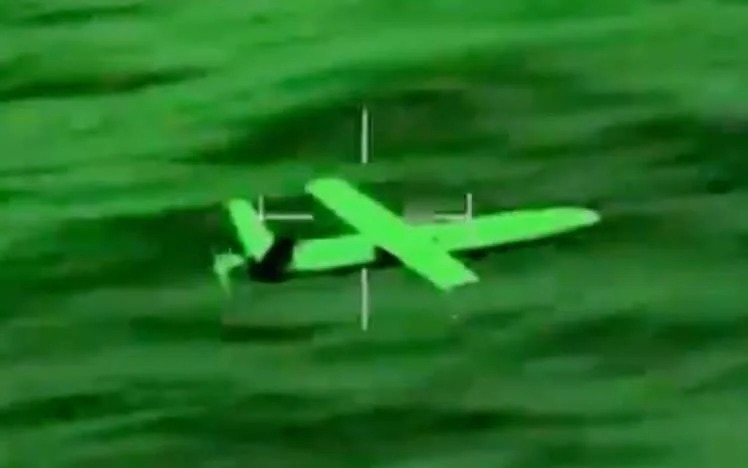The southern end of the Red Sea remains an active war zone. Missiles and drones continue to menace any ship passing through. Coalition assessments that allied strikes on Houthi radars and missile sites had worked were premature. Remarkably, slow flying one way attack drones are now being taken out by helicopters flying from international warships seeking to keep the Strait open.
Just the other day the Houthis fired five ballistic missiles at MV Huang Pu, a Panamanian-flagged, Chinese-owned and operated cargo ship. This came less than a week after the Houthis signed a deal with Moscow and Beijing in which they stated that Chinese and Russian flagged, owned and operated ships in the Red Sea and Gulf of Aden would not be attacked.
Beijing’s response will be interesting. Pressure on Iran is expected and if that works, an increase in the proportion of Chinese ships passing through (currently 11 per cent of the total traffic) will follow. Russia for its part has a dilemma as transmitting that you are Russian on a ship’s Automatic Identification System (AIS) transponder is just what the Russian “dark fleet” – oil smugglers hiding their identity to evade sanctions – don’t want to do.
Between the Huang Pu and the Russian dark fleet vessel they struck last month, we now have proof, if it was ever needed, that the Houthis often don’t know what they’re shooting at. Fortunately for the Chinese crew only one missile hit, causing a small fire which they quickly contained. Houthi missiles’ initial targeting, terminal guidance systems and warheads remain reassuringly poor. Many Houthi “ballistic missiles” are little better than modified artillery rockets.
As an aside, some of these events go to show just how sturdy merchant vessels are – you wouldn’t want to be hit in a thin-skinned warship, built light for better speed – by something doing a few thousand miles an hour, dud or not.
Shipping, as it so often does, has found a way around this – literally. But the extra miles covered in going round the Cape of Good Hope come at a cost. Indo-Pac to US East Coast freight rates have increased by more than 146 per cent: to the West Coast by 186 per cent since last December. But spot rates, the amount charged per container, although up from $3,300 last December to an average of $6,300, are at least levelling off. Experts say that the lull in manufacturing and demand caused by the Chinese New Year needs to fully end to see if this trend continues.
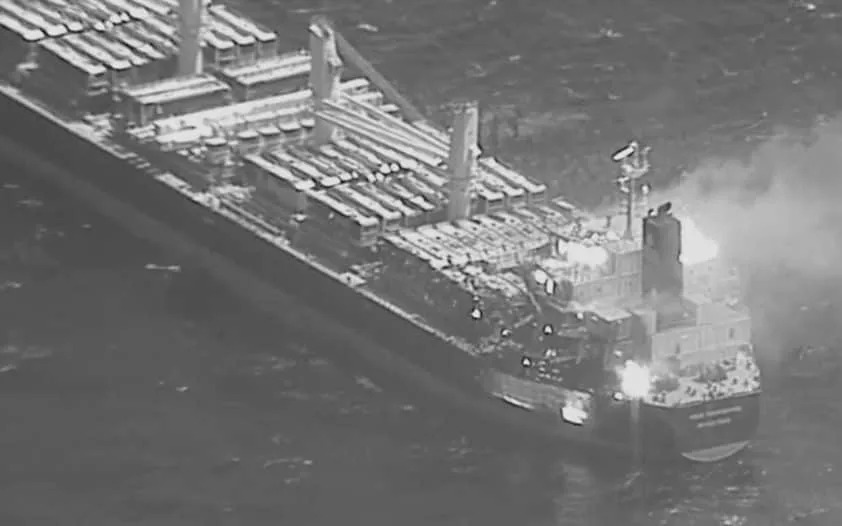
All this shows how interconnected the world is via the sea, although the main point is that rates and fees remain high – and this will be felt in your pocket and mine. Add to that CO2 emissions increasing by 260 to 354 per cent due to the longer route (and often faster passage speeds) and whilst rates are stable, shipping companies remain keen to resume routing through the Red Sea. In other words, going around is not the new normal.
There is another situation brewing as a result of this that has garnered little coverage so far – famine in Yemen. The latest Integrated Food Security Phase Classification (IPC) analysis reveals that 45 per cent of the population, almost 5 million people, analysed in the Government of Yemen’s controlled areas are estimated to be in Crisis (IPC Phase 3) or Emergency (Phase 4).
Yemen watchers will know that this is not new – it has consistently been the poorest and most food insecure area in the region, but it is now getting worse. US and international efforts in the Eastern Mediterranean to supply Gaza with food and aid have shown that countries only have so much tolerance for watching famine develop before something is done. This could perhaps be a good and legitimate reason to intervene in Yemen (on many levels). By whom though – that remains to be seen. Compared to Gaza or even the Western Black Sea, a humanitarian corridor into Yemen would be hard to protect. The issue of who takes and controls the stores once ashore would be equally fraught and complex.
In the meantime, various navies remain in the southern Red Sea and the Gulf of Aden at perpetual high readiness – in effect, in a shooting war. It is gruelling work down there with notice times as low as 30 seconds. The ships on picket duty at the bottom of the Red Sea in particular will need to be constantly rotated as the demands of both the task and the operating environment take their toll.
As if that wasn’t hard enough on its own, there are multiple groups and systems in play. Operation Prosperity Guardian (OPG) is the original US-led operation to coordinate and ensure safe passage of merchant shipping. EU countries continue to operate alongside it under the similarly defensive Aspides. The fact that political posturing and indecision has led to two heavily armed naval forces working under separate leadership and using different common air pictures is operational madness.
A German frigate engaging a US drone (unsuccessfully as it happened) is just the tip of what can go wrong in a high threat environment if everyone is not on the same page.
Having said that, the success rate against various Houthi weapons remains good. Warships are getting more and more confident and increasingly using guns against slower moving drones, so as to save expensive missiles. The cost of using high end missiles against low cost drones was discussed but in my view, never the issue. The cost of not using them was a better question, answered by the sinking of MV Rubymar. However, Nato and allied ammunition stocks are at an all-time low and if this situation is set to endure, which it is, innovative measures are to be welcomed for that reason, rather than cost.
US naval fast jet pilots are known to have shot down Houthi drones. Fighter pilots, of course, expect to shoot down other aircraft, and even if they are petrol powered robot propeller planes flying in a straight line this is still quite cool. But now even naval helicopter aviators, who to their eternal chagrin normally end up playing second fiddle to their fast jet mates, are getting air-to-air kills.
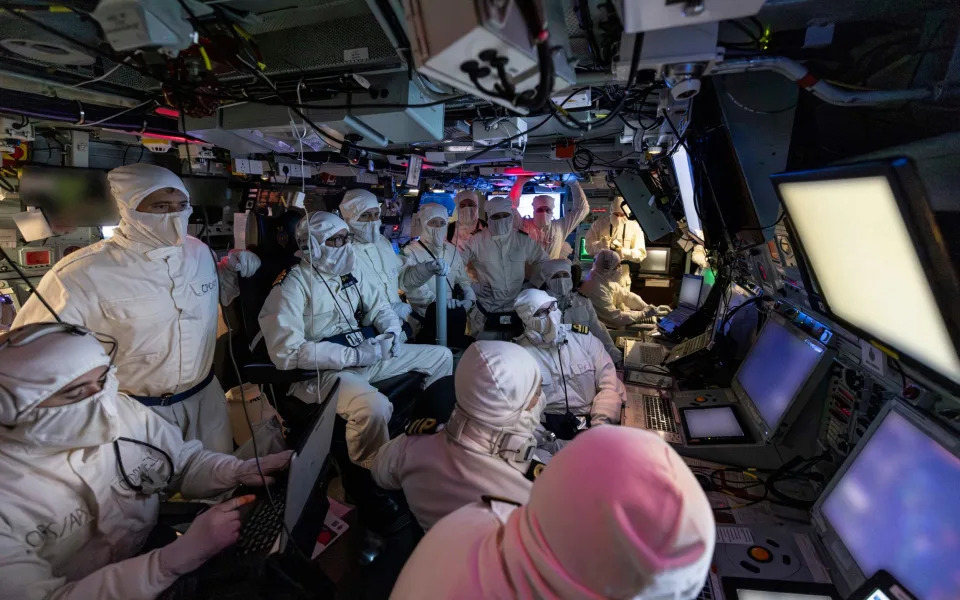
On 20 March a French Navy helicopter was directed onto a Samad drone and engaged it successfully with gunfire. Given that the two aircraft have comparable top speeds, this is a remarkable piece of airmanship and then marksmanship. Not to be outdone, German frigate Hessen’s Lynx helicopter armed with a .50 cal machine gun did the same a few days later.
Speaking as a former warship captain, anything that adds layers and improves the stand-off distance at which enemy weapons can be knocked down is to be welcomed – as is anything that allows you to keep back precious missiles to use against faster, more difficult cruise or ballistic missiles.
As a method though, this should not be relied upon. Small helicopters flown from frigates and destroyers have short legs, particularly in the heat, and can only fly for so many hours in a day before rest and maintenance become obligatory. You would also have to be very quick to get one launched in response to an incoming drone, whilst the act of launching makes you less manoeuvrable at a time when you want your moves the most. It also makes you more vulnerable if there is a follow-on missile attack.
But if the aircraft are up already, and the ships are sharp, then this is a remarkable development. Nobody would have foreseen the use of humble helicopters as air-to-air interceptors.
Nonetheless there is no room for complacency. In the case of billion-pound warships against cheap drones and improvised missiles, the Houthis only need to get lucky once. And besides, all this is just a fancy sticking plaster. The real issue is getting them to stop shooting in the first place and it is clear that whatever diplomatic pressure has been applied so far has not worked.
We know that the Houthis will not stop of their own accord and, without risking a major escalation either in Yemen or in Iran, making them stop is equally unlikely. Cutting off weapons shipments from Iran is difficult to say the least of it.
For now, shipping companies remain un-reassured and cargo prices remain high. Some ships have been hit, some have caught fire but been saved, a few have been boarded and seized and one has been sunk. It is only a matter of time before a warship, being asked to play perma-goalkeeper from within a poorly designed operational architecture, gets unlucky and is hit. You cannot just sit there and absorb wave after wave of attacks, it’s unsustainable on every level and it’s a credit to the ships there that they have done so for so long.
Anyone who thinks the Houthis will stick to their word and stop if there is a ceasefire in Gaza should look at the amount of promises they have broken before. China and Russia would do well to treat their new agreement with suspicion, with the former needing to work out if the almost immediate breach was deliberate or just poor shooting. Either way, they will not be impressed.
But something needs to change – hope is not a strategy. The idea of famine belatedly making the headlines might be a catalyst for action as might the striking of the Huang Pu. China needs the strait open more than most and if Beijing can’t trust the Houthis to not hit their ships, whether deliberately or by mistake, then they will lean on Iran. They won’t be doing it for the greater good, but the end result will be the same.
In the meantime, spare a thought for the mariners tasked to either run the gauntlet in their merchant ships or those in warships, waiting for weeks and months on end for someone to do something, anything, that allows them to stand down from missile stations.
Iran-backed Houthis attacked a Chinese ship with missiles after promising to leave them alone
-
The Houthis reportedly said they would avoid attacking Chinese ships off the coast of Yemen.
-
But the Iran-backed rebels fired multiple missiles at a Beijing-owned tanker on Saturday.
-
Last week, a US general warned lawmakers about deepening ties between Iran, China, and Russia.
The Houthis said they would refrain from attacking Chinese ships off the coast of Yemen, but this past weekend, the Iran-backed rebels did exactly what they said they wouldn't.
Early Saturday morning local time, the Houthis fired four anti-ship ballistic missiles toward the M/V Huang Pu, a Chinese-owned oil tanker, as the ship was transiting the Red Sea, according to US Central Command, or CENTCOM.
Hours later, the Houthis fired a fifth ballistic missile at the Huang Pu, which suffered "minimal damage" and a small fire but no casualties in the attack, CENTCOM said in a statement Saturday. It noted that the ship issued a distress call but did not request assistance. It was ultimately able to resume its journey.
"The Houthis attacked the M/V Huang despite previously stating they would not attack Chinese vessels," CENTCOM said.
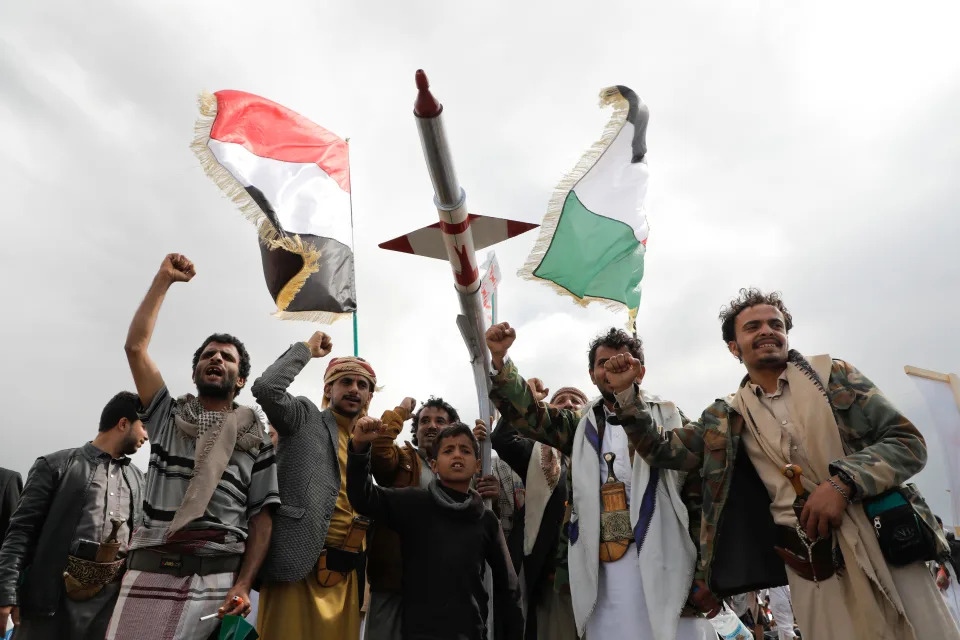
For months, the Houthis have used drones and missiles to attack ships with ties to various countries in the Red Sea and Gulf of Aden. But the rebels recently signed an agreement with China and Russia to guarantee their vessels safe transit through the volatile region, in exchange for possible political support at the United Nations, Bloomberg reported last week.
China and Russia have strong diplomatic and economic ties with Iran, which is the Houthis' main backer. Tehran, for example, supplies the rebels with advanced weaponry that they have used in their ongoing attacks.
A deepening partnership between China, Russia, and Iran
Gen. Michael Kurilla, the CENTCOM commander, warned US lawmakers last week that the three countries are strengthening their ties and "creating a chaotic landscape favorable for their exploitation and the spread of extremism."
China, Russia, and Iran "have deepened their partnership and collaboration as Iran seeks to strengthen its regional position, Russia leverages Iranian military support in Ukraine, and the PRC aims to exploit tensions in the region to afford them a position of advantage and diminishes US interests," Kurilla said in written testimony to the House Armed Services Committee.
The general said that it is "noteworthy" that China buys 90% of exported Iranian oil, "which they could use to influence Iranian lethal aid to the Houthis if they chose to."
"Instead, Beijing only helps Tehran evade sanctions and accelerate its destabilization of the region," Kurilla said. "The PRC's unwillingness, or inability, to leverage its influence has contributed to Iran's disruption of the free flow of international commerce."
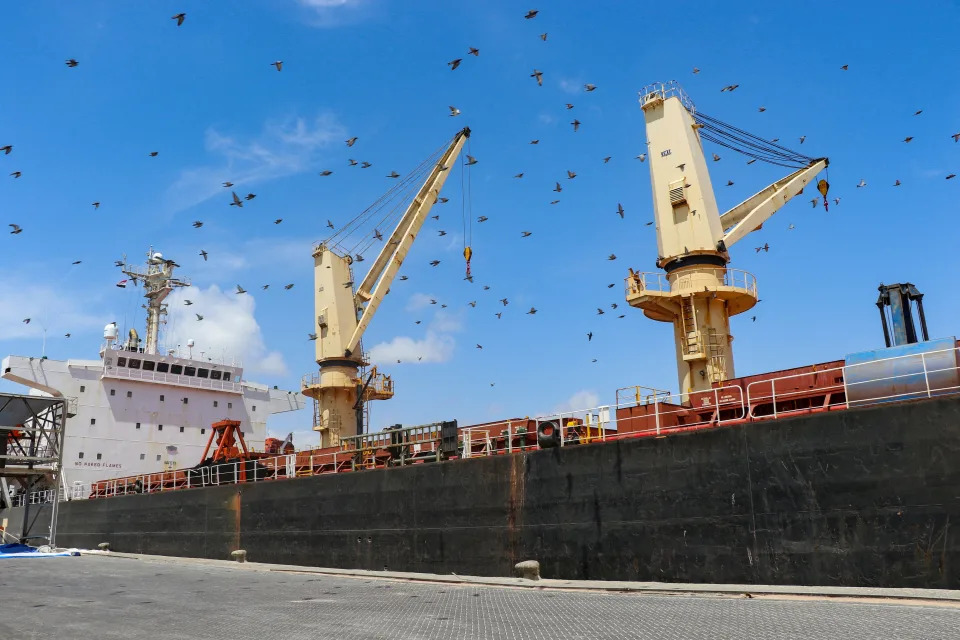
And Iran's unchecked malign activities put a Chinese ship at risk.
The M/V Huang Pu is Chinese owned and operated, but it was sailing under the flag of Panama when it was attacked. Furthermore, according to maritime security agency Ambrey, the vessel's registration details were changed last month, so it's possible that the rebels confused its identity.
Meanwhile, amid the attack on the Huang Pu on Saturday, US forces engaged six Houthi drones over the southern Red Sea. Five of the systems crashed into the water, while the sixth flew back inland into Yemen.
"It was determined these UAVs presented an imminent threat to US, coalition, and merchant vessels in the region," CENTCOM said. "These actions are taken to protect freedom of navigation and make international waters safer and more secure for US, coalition, and merchant vessels."



